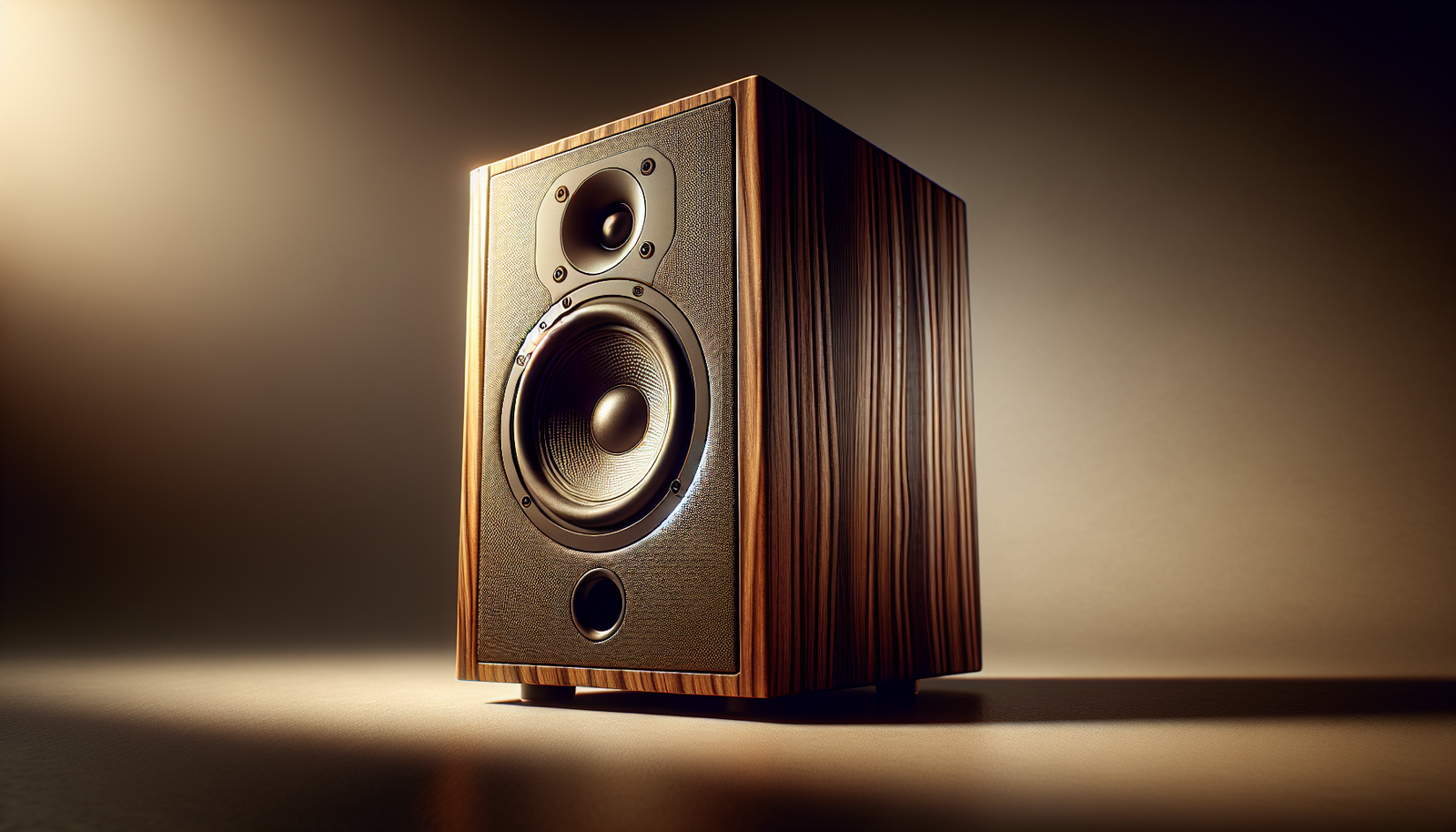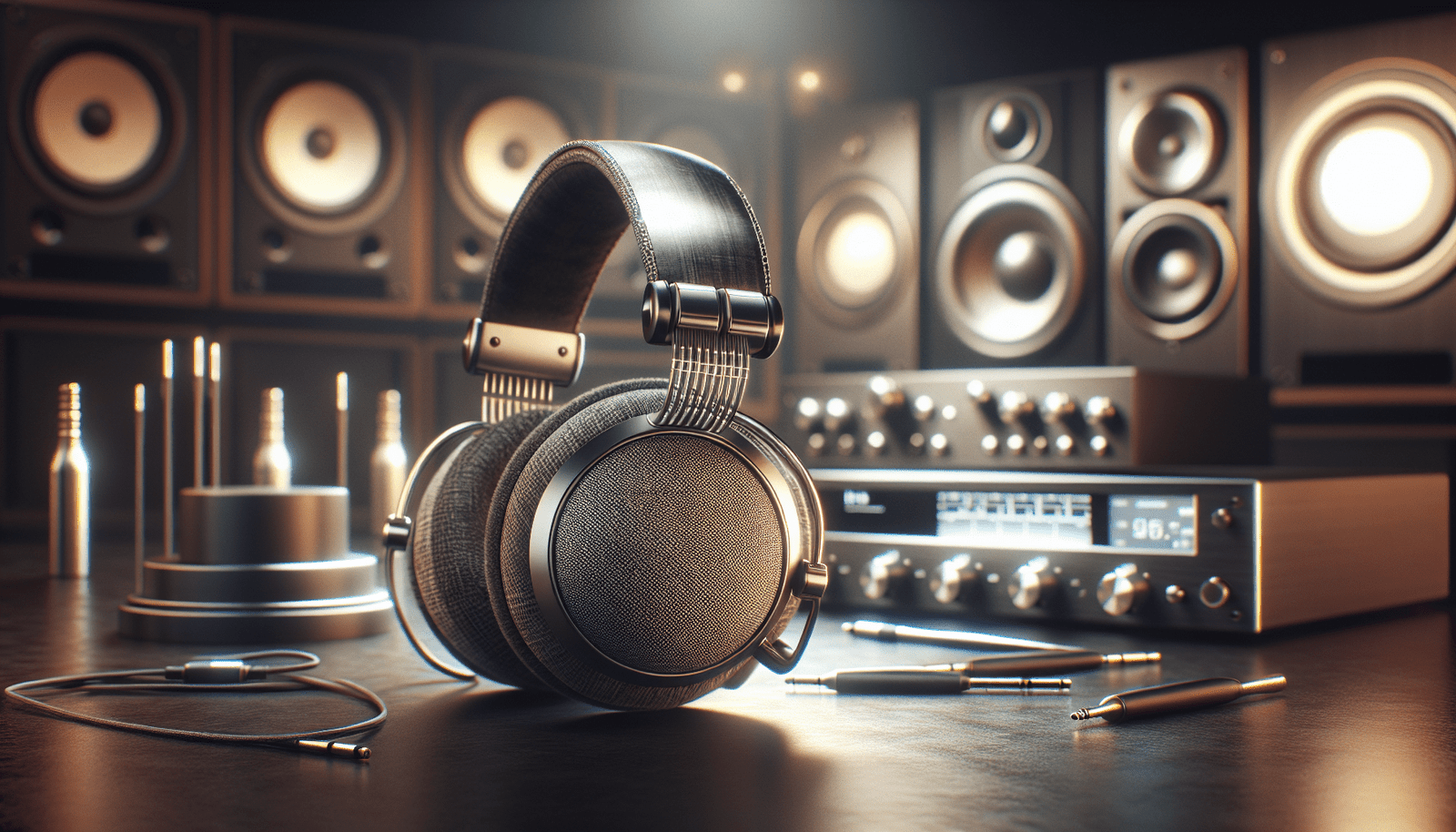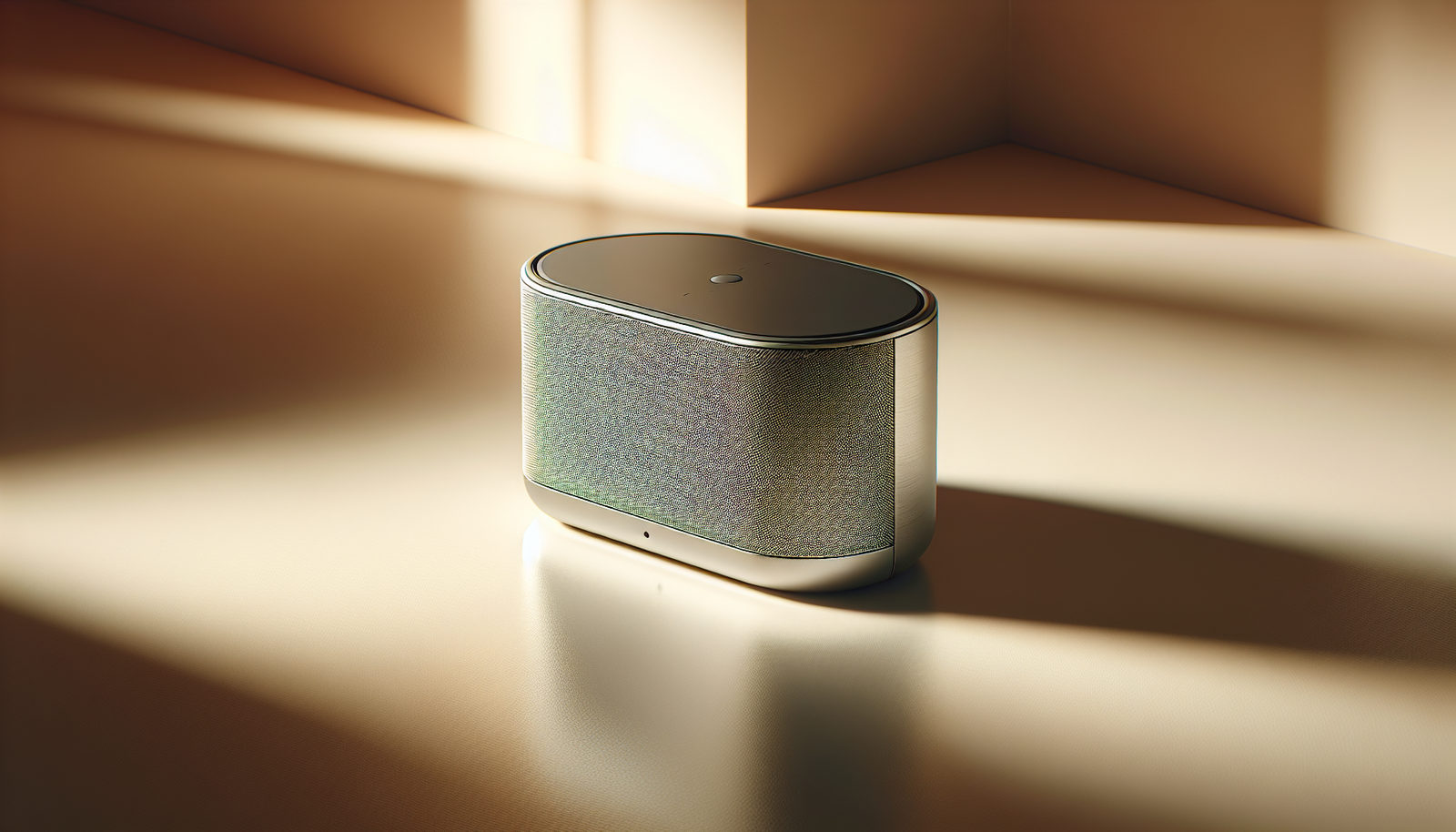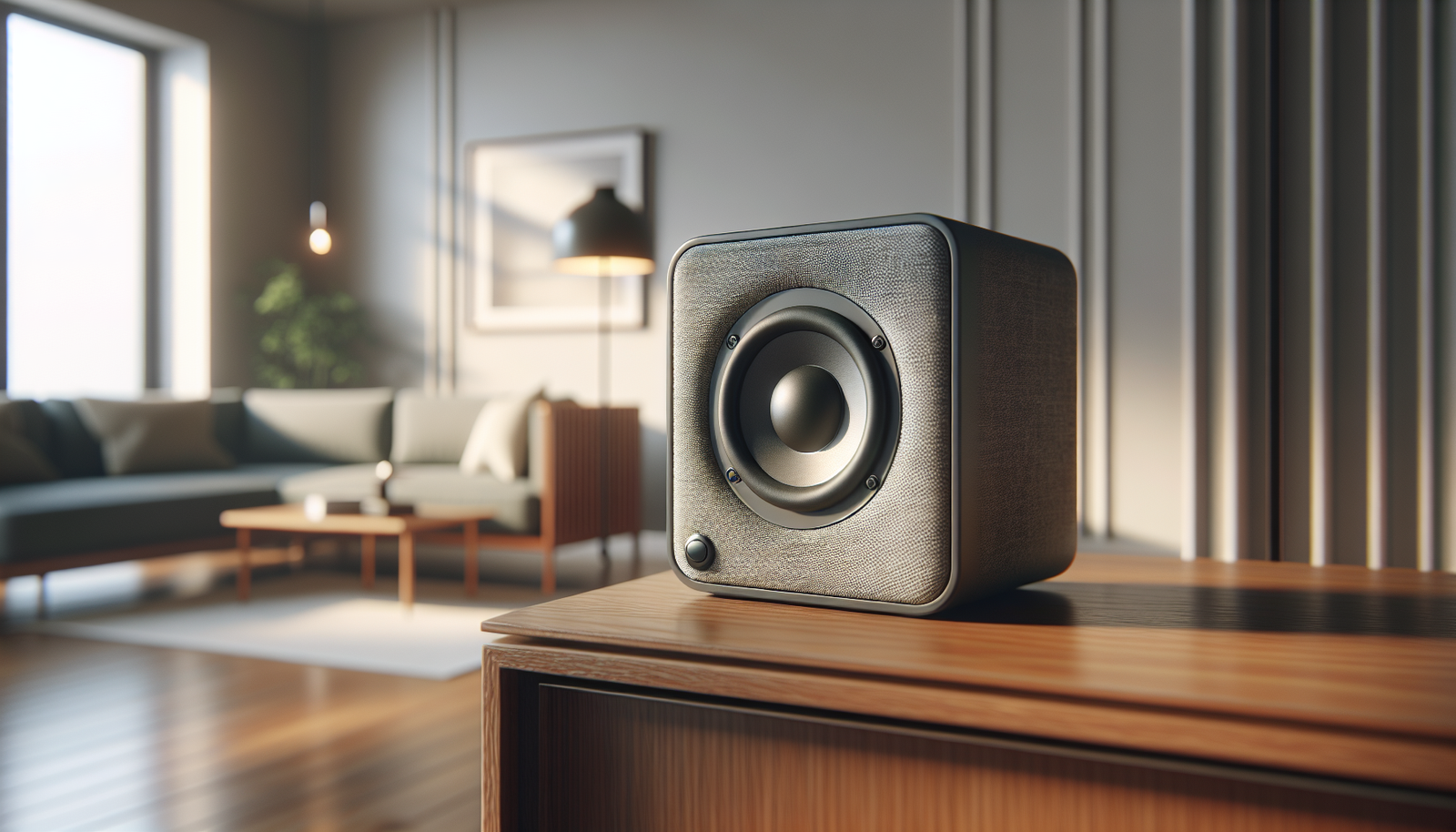Do you want a sound system that makes your music feel alive and accurate every time you press play?
Choosing the Right Sound System for Music
You’re about to learn how to select a sound system that fits your tastes, space, and budget. This guide will walk you through the components, choices, and practical steps so you can make confident decisions.
Understand Your Listening Goals
Before buying anything, you should be clear about why you want the system and what you expect from it. Your listening goals will guide choices about speakers, amplification, room treatment, and source quality.
Music genres and personal preference
Different genres place different demands on a system. If you listen to jazz and classical, you may prioritize clarity and imaging; if you listen to bass-heavy electronic music, you may prioritize low-frequency extension and impact.
Listening level and critical vs casual listening
Consider whether you primarily sit and critically listen or play music casually while doing other tasks. Critical listening benefits from controlled rooms and accurate monitors, while casual listening can tolerate room coloration and less precise gear.
Primary use case: home, studio, portable, live
Your use case dictates system type and features. Home systems emphasize comfort and aesthetics, studios require accuracy and flat response, portable systems emphasize convenience and battery life, and live systems focus on SPL and projection.
Components of a Sound System
A sound system is made of several critical components that work together to reproduce music. Understanding each part helps you match components and avoid bottlenecks.
Source: where the music begins
The source can be a turntable, CD transport, computer, phone, or streaming device. You should match your source quality (files, streaming resolution, vinyl) to the rest of the system to get the best result.
Preamp and DAC: control and conversion
A preamplifier controls volume and switching, while a DAC (digital-to-analog converter) transforms digital audio into analog. If you use digital sources, invest in a good DAC to improve clarity, staging, and detail.
Amplifier: power and control
An amplifier powers passive speakers and has a big impact on dynamics and control. You want an amp with enough clean power to handle your speakers without distortion, plus reserve headroom for transients.
Speakers: the final soundmakers
Speakers convert electrical signals into sound and determine the final character of your system. Choose speaker type (bookshelf, floorstander, monitor, powered) based on room size, listening distance, and desired sound signature.
Subwoofer: extending the lows
A subwoofer complements main speakers by handling the lowest frequencies. A properly integrated sub can add realism and impact without muddying the midrange.
Cables and accessories
Cables, stands, isolation pads, and racks don’t change the underlying sound as much as components, but good connectors and proper cabling help avoid problems and ensure reliable performance.
Types of Sound Systems
Different system formats suit different needs and spaces, so you should match the format to how you’ll use it. Below are common system types and the scenarios where they work best.
Stereo Hi‑Fi systems
Stereo systems prioritize accurate left-right imaging and musicality. They are the most common choice for music lovers who want a faithful representation of recordings.
Powered speakers vs passive speakers
Powered speakers have built-in amplification and simplify setup. Passive speakers require external amplifiers but offer more flexibility for upgrades and component matching.
Bookshelf vs floorstanding speakers
Bookshelf speakers are compact and suited to smaller rooms or nearfield listening, while floorstanding speakers provide more bass and power handling for larger rooms. Your available space and aesthetic preferences will influence your choice.
Soundbars and home theater
Soundbars are compact solutions primarily for TV audio but some models perform well for music. If music is your main focus, soundbars typically can’t match a dedicated stereo system for imaging and fidelity.
Studio monitors
Studio monitors are engineered for accuracy and a flat response so you can judge recordings objectively. If you produce or mix music, monitors help you hear details and make better decisions.
Portable and Bluetooth systems
Portable systems offer convenience, battery operation, and wireless connectivity. These are great for casual listening on the go, outdoors, or in rooms where you can’t run cables.
PA and live sound systems
PA systems are designed to project sound across an audience and to cope with high SPLs. For small venues, choose compact powered PA speakers; for larger gigs, a full PA rig with mixers and signal processing is required.
Quick comparison of system types
| System Type | Best For | Pros | Cons |
|---|---|---|---|
| Stereo Hi‑Fi | Critical music listening | Imaging, fidelity, musicality | Requires space and setup |
| Powered Speakers | Small rooms, simplicity | Easy setup, integrated amp | Less upgrade flexibility |
| Bookshelf Speakers | Apartments, nearfield | Compact, affordable | Limited bass output |
| Floorstanding Speakers | Large rooms, full-range | Better bass, dynamics | Require space |
| Studio Monitors | Production/mixing | Accurate, flat response | Can sound clinical for casual listening |
| Soundbars | TV rooms, simplicity | Compact, integrate with TV | Limited stereo image |
| Portable/Bluetooth | On-the-go use | Convenience, wireless | Limited audio fidelity |
| PA Systems | Live events | High SPL, projection | Bulky, not optimized for home listening |
Matching Components: Impedance, Power, Sensitivity
You need to match speakers and amplifiers in terms of impedance, power handling, and sensitivity to avoid poor performance or damage. Understanding these parameters helps you choose compatible gear.
Speaker sensitivity explained
Sensitivity indicates how loudly a speaker will play for a given power input, usually measured in dB (1W/1m). Higher sensitivity speakers require less amplifier power to reach a given SPL, useful for low-power amplifiers or large rooms.
Amplifier power and headroom
Amplifier power matters for dynamics and clean transient reproduction. You should pick an amp with enough continuous and peak power to provide headroom, reducing the risk of clipping that causes distortion.
Impedance matching and minimum load
Speakers are rated at nominal impedance (commonly 4, 6, or 8 ohms). Ensure your amplifier can handle the speaker’s impedance; many solid-state amps tolerate 4 ohm loads, while tube amps often prefer higher impedances.
| Parameter | Typical Values | What It Means |
|---|---|---|
| Sensitivity | 84–95 dB (common) | Higher = louder per watt |
| Nominal Impedance | 4, 6, 8 ohms | Lower can demand more current |
| Recommended Amp Power | 20–200+ W | Depends on speaker and room |
Room Acoustics and Speaker Placement
Your room has a huge influence on how the system sounds, often more than individual components. Treating your room and positioning speakers carefully will significantly improve clarity, imaging, and bass control.
Room treatment basics
Absorption, diffusion, and bass trapping control reflections, modal buildup, and reverberation. Start with placement and then add treatment in critical reflection points and corners for best results.
Speaker placement rules
Aim for an equilateral triangle between you and the two main speakers for balanced stereo imaging. Keep speakers a sensible distance from walls to reduce boundary reinforcement; moving them a few inches can change bass significantly.
Subwoofer placement and bass management
Subwoofer location strongly affects the perceived bass response because room modes vary by placement. Use the subwoofer crawl method (placing sub at listener position and moving around room to find max bass spots) or measurements to find the optimal spot.
| Placement Tip | Effect |
|---|---|
| Move speakers away from side walls | Improves imaging |
| Avoid corner placement for mains | Reduces boominess |
| Multiple subs | Smooths bass modes across room |
Cables, Connectors and Signal Flow
Signal flow and the right connectors keep your system reliable and interference-free. You don’t need exotic cables, but you should use appropriate wiring and maintain good grounding.
Common connectors: RCA, XLR, TRS, speaker wire
RCA is typical for consumer analog connections, XLR/ TRS for balanced pro audio, and speaker wire for passive loudspeakers. Balanced connections reduce noise and are preferred for long cable runs.
Digital connections: USB, S/PDIF, optical, Ethernet
Digital links such as USB and S/PDIF carry digital audio to a DAC; Ethernet enables network audio and streaming via protocols like Roon or AirPlay. Choose the digital format compatible with your source and DAC.
Avoiding ground loops and interference
Ground loops cause hums; you can mitigate them by using balanced cables, keeping power and signal cables separate, or using ground loop isolators when needed. Proper cable routing and quality connectors reduce interference.
Choosing Based on Budget
Budget matters more than specs alone; sensible allocation yields the best results. Identify priorities—speaker quality often yields more audible improvements than expensive cables or accessories.
Entry-level: up to $500–$1,000
At this level, aim for good bookshelf speakers and either a modest integrated amp or active monitors. You can get satisfying sound by prioritizing speakers and a reliable source (phone with a decent DAC or entry streamer).
Mid-range: $1,000–$5,000
Mid-range budgets let you buy better floorstanding speakers, higher-quality DACs, and a dedicated integrated amplifier. Room treatment and proper stands add significant performance for relatively low cost.
High-end: $5,000+
High-end systems provide refinement, better dynamics, and lower distortion. Beyond a point, improvements become incremental, and system synergy and room treatment matter more than individual high-end components.
| Budget Tier | Typical Gear | Priorities |
|---|---|---|
| Entry | Bookshelf + integrated amp or active speakers | Speaker quality, simple setup |
| Mid | Floorstanders, quality DAC, good amp | Room treatment, component matching |
| High | High-end speakers, discrete electronics | System synergy, acoustic treatment |
Buying Tips: What to Listen For
When auditioning equipment, you should listen critically and in context. Bring familiar tracks and listen for specific hallmarks that match your goals.
Critical listening checklist
Listen for tonal balance, transient speed, imaging, soundstage width and depth, bass extension and control, and distortion at higher volumes. Pay attention to how long you can listen without fatigue; a system that sounds exciting initially may be fatiguing long-term.
Blind testing and return policies
Blind tests remove bias but can be difficult to arrange. At minimum, choose dealers with favorable return policies so you can test in your own room for a few days.
Specs vs real performance
Specifications like frequency range or power ratings are useful but don’t tell the whole story. Trust your ears and room-based testing more than marketing claims.
Setup and Calibration
A good setup yields outsized improvements without extra spending. Calibrate speakers, manage levels, and use tools like room correction for best results.
Breaking in speakers and electronics
Some components benefit from a break-in period where mechanical parts settle. You can listen while burn-in occurs, but prefer measured listening after several dozen hours to evaluate true performance.
Using room correction and DSP
Room correction and digital signal processing can mitigate acoustic problems and flatten response. Use these tools judiciously, as overuse can strip natural tonal qualities if applied incorrectly.
EQ basics and avoiding over-EQ
Equalization can help, but it can’t fix major acoustic problems. Use EQ to tame small peaks or dips, and prefer acoustic treatment for larger issues.
Maintenance and Care
Proper maintenance extends the life of your equipment and preserves performance. Regular care includes cleaning, safe storage, and careful handling.
Speaker care and cleaning
Dust speaker cones and grills gently, avoid solvents near finishes, and check surrounds for wear on older speakers. Keep speakers away from moisture and direct sunlight.
Electronics and amplifier care
Ensure ventilation and airflow for amplifiers and receivers, update firmware for digital components, and power-cycle devices when recommended. Use surge protection to guard against electrical events.
Streaming apps and firmware
Streaming devices and apps regularly update for compatibility and performance. Keep software up to date, and check changes after updates in case settings need reapplying.
Troubleshooting Common Problems
Most issues are solvable with step-by-step checks and proper tools. You should follow logical troubleshooting to isolate causes like cables, settings, or component failure.
No sound or low volume
Check source selection, mute settings, and connections. Verify power, input selection on the preamp or receiver, and that speaker cables are correctly connected.
Distortion, clipping, and overheating
Distortion often indicates amplifier clipping or driver overload. Reduce volume, check speaker impedance compatibility, and ensure ventilation to prevent overheating.
Hums, buzzes, and ground loops
Hums are often ground loops or bad cables. Swap cables, use balanced connections, or isolate the ground with transformers or ground loop isolators if necessary.
Recommended Configurations for Common Use Cases
Here are practical system builds you can adapt to your situation. Each suggestion balances cost, space, and performance to help you choose.
Small apartment music lover
Powered bookshelf speakers with stands and an entry-level DAC create high performance in limited space. Add small acoustic panels and a subwoofer for fuller bass without overpowering neighbors.
Dedicated home listening room
Floorstanding speakers, a high-quality integrated amp, and an audiophile DAC deliver immersive music. Invest in room treatments, speaker stands, and a comfortable listening position.
Desktop/studio setup
Active studio monitors, an audio interface with a good DAC, and room treatment for nearfield listening provide accurate results for production. Keep speaker symmetry and listening height consistent for reliable mixes.
Portable and casual listening
A high-quality Bluetooth speaker or compact powered speaker paired with lossless-capable streaming (if available) gives convenience without completely sacrificing fidelity. Battery life and Bluetooth codecs (aptX, AAC, LDAC) matter here.
Small live performances or parties
A pair of powered PA speakers with a mixer and simple subwoofer will cover most small venues. Choose models with onboard DSP and EQ for quick sound shaping.
| Use Case | Typical Setup |
|---|---|
| Apartment listener | Powered bookshelf + sub + DAC |
| Home audiophile | Floorstanders + integrated amp + DAC |
| Desktop/studio | Active monitors + audio interface |
| Portable | High-end Bluetooth speaker |
| Live/party | Powered PA pair + mixer + sub |
Final Checklist Before You Buy
Follow this checklist to avoid common mistakes and confirm compatibility. It will help you make a purchase you’re happy with.
- Define your primary use, listening environment, and budget.
- Prioritize speakers and room treatment before peripherals.
- Match amplifier power and impedance to speakers.
- Test gear with familiar music and in your own room when possible.
- Check return policy and warranty.
- Factor in stands, cables, and placement into your budget.
Frequently Asked Questions (FAQ)
Q: Should you buy powered or passive speakers? A: Choose powered speakers if you want simplicity and compact setup; pick passive speakers if you want upgrade flexibility and separate amplification options.
Q: Do cables make a big difference? A: Standard good-quality cables ensure reliable connections; beyond that, diminishing returns apply. Use balanced cables for long runs and proper-gauge speaker wire for passive systems.
Q: How loud should you expect from a small bookshelf speaker? A: A typical bookshelf speaker with 88–90 dB sensitivity will comfortably fill a small to medium room at moderate listening levels. For louder playback, consider floorstanders or a more powerful amp.
Q: Is room treatment more important than speaker upgrades? A: For most listeners, yes—addressing room acoustics often results in bigger perceived improvements than swapping a single component.
Q: Do you need an expensive DAC for streaming? A: Not always. Many modern streamers and phones have good DACs, but a dedicated external DAC can reveal additional detail and reduce noise, especially with high-resolution files.
Closing thoughts
Now that you’ve read the essentials, you should feel more confident planning and assembling a system that fits your needs. Take the time to audition gear, treat your room intelligently, and match components carefully—doing so will give you more musical reward than chasing the latest shiny product. If you’d like, tell me your room size, budget, and the music you listen to, and I can suggest concrete speaker and amp combinations tailored to your situation.



